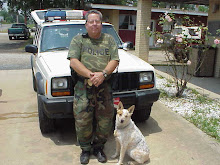Saturday, October 31, 2015
PART FIVE of a EIGHT PART series COOKING WITH GRANMA'S CAST IRON
COOKING WITH GRANDMA’S CAST IRON COOKWARE
A SERIES OF ARTICLES ABOUT REFURBISHING AND USING CASTIRON
BY LARRY & BETTY HARMON
Part five- charcoal briquettes or campfire coals, your choice
When the wagon trains were moving west as America was being settled, there weren’t any charcoal briquettes down at the corner convenience store, so everyone used hard wood or buffalo chips for cooking fuel. While cooking with coals from the campfire, using a grid works well for the bottom heat in a Dutch oven, but what about the top ? Most users put live coals up onto the Dutch oven top with a metal scoop or tongs. Live coals from the campfire are not tightly compacted like the charcoal briquettes are and must be replenished more often.
While on the topic about wagon trains and live coals, I have been asked why the Dutch oven could be seen hanging from underneath the wagon at the back. It was a safe way to transport fire from one night camp to another. They would put a scoop of ashes in the oven, then a scoop of live coals topped with a scoop of ash and the lid put on.
Because live coals tend to burn with a higher intensity they burn out quicker and need to be replenished more often, making temperature regulation somewhat more difficult. A long handle shovel makes handling live coals more comfortable because of the more intense heat.
Betty and I like live coals for Dutch oven biscuits in the morning so we will add extra fuel to the campfire and shovel dirt over it to bank it up overnight. That newly added fuel will become charcoal overnight and you just pull the cover of dirt off to the side, shoveling the live coals as needed. As the dirt is removed the charcoal gets the air that is needed for combustion and begin to glow brightly immediately. Again, a long handle shovel is a handy thing.
Sunday, October 18, 2015
COOKING WITH GRANDMA’S CAST IRON COOKWARE
A SERIES OF ARTICLES ABOUT REFURBISHING AND USING CASTIRON
BY LARRY & BETTY HARMON
Part four- cooking with cast iron, applying heat evenly to top and bottom
Needing to apply heat to the top and the bottom at the same time is almost exclusively a Dutch oven thing. For example when coking corn dodgers, it is usually a cast iron frying pan that is used and the dodger is turned as needed with a fork or spatula. Here is a look at cooking corn dodgers over a campfire.
Dutch oven cooking however seems to need a bit more heat on the bottom and a bit less on the top. Our rough rule of thumb for most recipes is about one fourth less coals on the top. Only time and experience will get it perfected to suit your old traditional family recipes. In this short video Betty is putting the corn bread batter in the pre heated Dutch oven.
After adding the batter, the lid is put in place and the charcoal is put on the oven lid.
The charcoal on the Dutch oven bottom is on a sheet of aluminum foil because we didn’t have a good dry layer of ash in our fire pit. We were having daily spring time showers and the foil directed the heat up to the Dutch oven instead of being wicked away by the damp ground. Though not quite done yet, here is our first peek at our corn bread.
As you can see in these short videos it is a fairly simple process and the even distribution of heat makes for well browned and delicious campfire corn bread !
Saturday, October 3, 2015
COOKING WITH GRANDMA’S CAST IRON COOKWARE
A SERIES OF ARTICLES ABOUT REFURBISHING AND USING CASTIRON
BY LARRY & BETTY HARMON
Part three- “Once the cast iron is ready how do I keep it that way ?”
As a child here in these Ouachita mountain’s I discovered that there were some pretty cool secrets to be gleaned from a visit to Grandma’s kitchen. However this neat trick came from helping Granpa’ as we processed a couple of fattening hogs for the freezer. Grandpa deftly removed a couple of hog’s tails and handed them to me, saying that I should take them to Grandma’ who was preparing some of the hog’s finer cuts in the kitchen. When I asked if she was going to cook up the hog tails, she laughed out loud, put a small slice of fresh buttermilk pie on the table and said to me, “wash up and snack on this while I tell you a story.”
Now, Grandma’s story was a trip back in time to life in the mountains between the two world wars when times was hard and life was a bit “catch as catch can”.
The short of the story is that most mountaineer’s cabins had a pig tail on a string hanging from a nail up on the wall behind the old wood cook stove. After cleaning the cast iron, it was warmed on the stove and the pig tail which was almost all fat, would be rubbed all over it to keep it oiled up and rust free.
He, he, now, there are ever so many reasons that we aren’t doing it that way now a’ day’s ! But the main principle of the story is the way to have your cast iron ready for it’s next outing. It just needs a light sheen of oil wiped on it while warm, using a paper towel. Then it is ready for storage. Yep, it is just that simple, pig tail not required !
Subscribe to:
Posts (Atom)
